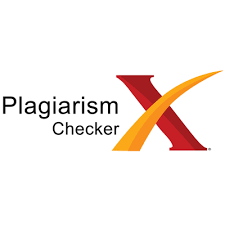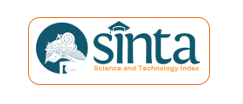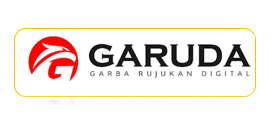KOMPARASI PENGEMBANGAN KURIKULUM PENDIDIKAN SEJARAH DI INDIA DAN INDONESIA TINGKAT SEKOLAH MENENGAH ATAS
Abstract
Abstract: The study aims to compare the curriculum of history education at the high school level in India and Indonesia. Especially on the basis of the problem of a decline in the Human Development Index in 2021 due to the COVID-19 pandemic which has an impact on the education sector. With that, we want to see how India and Indonesia can improve the human development index in the field of education through curriculum development. Method: The research method uses qualitative with a descriptive comparative approach with sources obtained through report ministry education. Findings: The results of the study show that India and Indonesia have a way of developing the curriculum. Especially in history education, the high school level has characteristics in approaches, foundations, allocations, and learning materials. Conclusion: India emphasizes humanism and essentialism as the foundation for history learning through interdisciplinary and local history learning, while Indonesia emphasizes the foundation of the philosophy of independent learning derived from humanism. Where the approach to learning history comes from chronological and thematic, especially the study material is in accordance with periodidation and historical themes.
Abstrak: Penelitian ini bertujuan untuk membandingkan kurikulum pendidikan sejarah di tingkat sekolah menengah di India dan Indonesia. Terutama atas dasar permasalahan penurunan Indeks Pembangunan Manusia pada tahun 2021 akibat pandemi COVID-19 yang berdampak pada sektor pendidikan. Dengan itu, kami ingin melihat bagaimana India dan Indonesia dapat meningkatkan indeks pembangunan manusia di bidang pendidikan melalui pengembangan kurikulum. Metode: Metode penelitian menggunakan pendekatan kualitatif dengan pendekatan komparatif deskriptif dengan sumber yang diperoleh melalui pendidikan kementerian laporan. Temuan: Hasil penelitian menunjukkan bahwa India dan Indonesia memiliki cara untuk mengembangkan kurikulum. Khusus dalam pendidikan sejarah, jenjang SMA memiliki karakteristik dalam pendekatan, yayasan, alokasi, dan materi pembelajaran. Kesimpulan: India menekankan humanisme dan esensialisme sebagai landasan pembelajaran sejarah melalui pembelajaran sejarah interdisipliner dan lokal, sedangkan Indonesia menekankan landasan filosofi pembelajaran mandiri yang berasal dari humanisme. Dimana pendekatan pembelajaran sejarah berasal dari kronologis dan tematik, terutama materi kajiannya sesuai dengan periodidasi dan tema sejarah.
Keywords
Full Text:
PDFReferences
Abrar. (2015). Kurikulum Sejarah Jenjang SMA: Sebuah Perbandingan Indonesia-Australia. Jurnal Pendidikan Sejarah, 4(1), 14–31. https://doi.org/10.21009/JPS.041.02
Aimah, S. (2019). Kurikulum Pendidikan Tinggi Empat Negara Indonesia, India, Irak dan Turki. Jurnal Pendidikan Islam, 12(2). https://doi.org/10.36835/tarbiyatuna.v12i2.400
Anggraena, Yogi, dkk. (2022). Panduan Pembelajaran dan Asesmen Pendidikan Anak Usia Dini, Pendidikan Dasar, dan Menengah. Pusat Kurikulum dan Pembelajaran BSKAP Kemendikbudristek
Anggraena, Yogi, dkk. (2021), Kajian Akademik Kurikulum untuk Pemulihan Pembelajaran, Jakarta: Pusat Kurikulum dan Pembelajaran BSKAP Kemendikbudristek, edisi.1
Aithal, P. S., & Aithal, S. (2020). Analysis of the Indian National Education Policy 2020 towards achieving its objectives. International Journal of Management, Technology, and Social Sciences (IJMTS), 5(2), 19-41.
Aithal, P. S., & Aithal, S. (2020). Implementation strategies of higher education part of national education policy 2020 of India towards achieving its objectives. International Journal of Management, Technology, and Social Sciences (IJMTS), 5(2), 283-325.
Baruta, Yusuf. (2023). Assesmen Pembelajaran Pada Kurikulum Merdeka (Pendidikan Anak Usia Dini, Pendidikan Dasar dan Pendidikan Menengah). Pusat Pengembangan Pendidikan dan Penelitian Indonesia
Budiono, Arifin Nur., Mochammad Hatip. (2023). Asesmen Pembelajaran Pada Kurikulum Merdeka. Jurnal Matematika dan Pembelajaran, 8(1). https://doi.org/10.56013/axi.v8i1.2044
Banerjee, Mita. (2023). Implementation Of NEP 2020 Curriculum: An Overview. Journal of Education and Culture, 3(1), April 2023
Chutia, U., Dutta, M. G., Kaur, H., Sing, B., & Shastri, M. A. (2022). Implementation Strategies of National Education Policy 2020: Psycho-Legal Analysis towards Achieving its Objectives. Journal of Positive School Psychology, 6(2), 3058-3066.
Ihsan, Reza Amin Nur et al. 2021. Problematika dan Perubahan Kebijakan Pendidikan di Indonesia. Juremi: Jurnal Riset Ekonomi 1(1): 17–26. https://doi.org/10.53625/juremi.v1i1.280
Jena, P. K. (2020). Impact of Covid-19 on higher education in India. International Journal of Advanced Education and Research (IJAER), 5.
Jianliang, Wang., Yang Yang. The Schemes, Purposes and Challenges of Primary and Secondary Educational Reform in India: Interpretation based on India’s “National Education Policy Implementation Plan 2020”. Journal Education Science, 2023, 39(1): 69-75. https://jykx.lnnu.edu.cn/CN/Y2023/V39/I1/69
Juditya, Silvy. (2023). Pendidikan Jasmani Di Era Kurikulum Merdeka. PT. Pena Persada Kerta Utama
Kalyani, Pawan. 2020. “An Empirical Study on NEP 2020 [National Education Policy] with Special Reference to the Future of Indian Education System and Its Effects on the Stakeholders.” Journal of Management Engineering and Information technology, (7)5, October 2020. http://dx.doi.org/10.5281/zenodo.4159546
Kementerian Pendidikan, Kebudayaan, Riset dan Teknologi RI. (2023). Struktur Kurikulum Merdeka dalam Setiap Fase. Diakses melalui Website Pusat Informasi Guru pada 17 Desember 2023
Kementerian Pendidikan, Kebudayaan,. Riset. dan Teknologi RI. (2023). Laporan PISA Kemendikbudristek.
Khasyi’in, N. (2021). Kajian Pendidikan Agama Islam di India. Adiba: Journal Of Education, 1(1), 6–18. https://adisampublisher.org/index.php/edu/issue/view/7
Khodijah, S., & Kusuma, H. (2023). Perbandingan Pendidikan Indonesia Dan India Tinjauan Kebijakan Terbaru. Mukaddimah, 8(1). https://ejournal.uin-suka.ac.id/pusat/mukaddimah/article/view/3150
Kumar, A. (2021). New education policy (NEP) 2020: A roadmap for India 2.0. University of South Florida (USF) M3 Publishing, 3(2021), 36.
Labudasari, E, dkk. (2023), Kurikulum Merdeka Teori dan Praktik di Sekolah. Penerbit Indonesia Emas Group.
Marmoah. S, Roslan. R, Chaeroh. M, Elita. M.D, Fauziah. M. (2021). The Comparison of Education System in Australia and Indonesia. JPI, 10(4)
Mayadi. M, Awang. M. M, Ahmad. A. R, Ahmad. A. (2019). Curriculum of History Education in Malaysia, Finland and Republic of Turkey: A Comparative Literature Analysis. Global Conferences Series: Social Sciences, Education and Humanities (GCSSSEH), Volume 2, 2019
Mubarak, A Zaki. 2022. “Desain Kurikulum Merdeka Untuk Era Revolusi Industri 4.0 dan Society 5.0” CV. Turats Press.
National Council of Educational Research amd Training (NCERT). (2023). National Curriculum Framework for School Education. India: National Steering Committee
Naijan. (2015). Kurikulum Pendidikan Sejarah di India. Jurnal Pendidikan Sejarah, 4(1). https://doi.org/10.21009/JPS.041.07
Organization for Economic Cooperation and Development (OECD). (2022). Comparing countries’ and economies’ performance in mathematics Statistically above the OECD average from the OECD average Statistically below the OECD average PISA 2022 Results.
Panditrao, M. M., & Panditrao, M. M. (2020). National Education Policy 2020: What is in it for a student, a parent, a teacher, or us, as a Higher Education Institution/University?. Adesh University Journal of Medical Sciences & Research, 2(2), 70-79.
Purwaningsih, I., Oktariani, O., Hernawati, L., Wardarita, R., & Utami, P. I. (2022). Pendidikan sebagai Suatu Sistem. Jurnal Visionary: Penelitian dan Pengembangan dibidang Administrasi Pendidikan, 10(1), 21-26. https://doi.org/10.33394/vis.v10i1.5113
Rezeki, W., Amalia, T., & Ananda Putri, K. (2020). India Dalam Dunia Pendidikan. Jurnal Dinamika Pendidikan. 13(1). https://doi.org/10.33541/jdp.v13i1
Sigalingging, Ropin. (2022). Pembelajaran Berdiferensiasi Pada Implementasi Kurikulum Merdeka The Differentiatiated Classroom. Tata Akbar
Sundaram, K. M. (2020). National Education Policy 1986 vs National Education Policy 2020–a Comparative Study. International Research Journal on Advanced Science Hub, 2(10), 127-131.
Sutarto. 2015. Dasar-Dasar Organisasi, Cetakan Keduapuluh Tiga. Yogyakarta: UGM Press
United Nations Development Programme (UNDP). (2022). Human Development Report 2021/2022: Uncertain Times, Uncertain Lives: Shaping Our Future in a Changing World. Diakses melalui Website UNDP pada 12 Desember 2023.
Tim Laporan Pemantauan Pendidikan Global. (2022). S I A P A Y A N G M E M I L I H ? S I A P A Y A N G R U G I ?. UNESCO
Widodo, Hendro. (2023). Pengembangan Kurikulum PAI. UAD Press.
Zainal. N, Awang. M. M, Ahmad A. R, Ahmad. A, Muhthar. A. (2019). A Comparative Study of History Education Curriculum in Malaysia and Indonesia. Global Conferences Series: Social Sciences, Education and Humanities (GCSSSEH), Volume 2, 2019
DOI: http://dx.doi.org/10.17977/um0330v7i2p233-253
Refbacks
- There are currently no refbacks.

This work is licensed under a Creative Commons Attribution-ShareAlike 4.0 International License.
Editorial office:
History Department, Faculty of Social Science,
Universitas Negeri Malang
Jl. Semarang No.5 Kota Malang 65145,
Phone. (0341) 551312,
email: jpsi@um.ac.id
Website: http://journal2.um.ac.id/index.php/sejarah/index
E-ISSN 2622-1837

This work is licensed under a CC BY SA 4.0.









